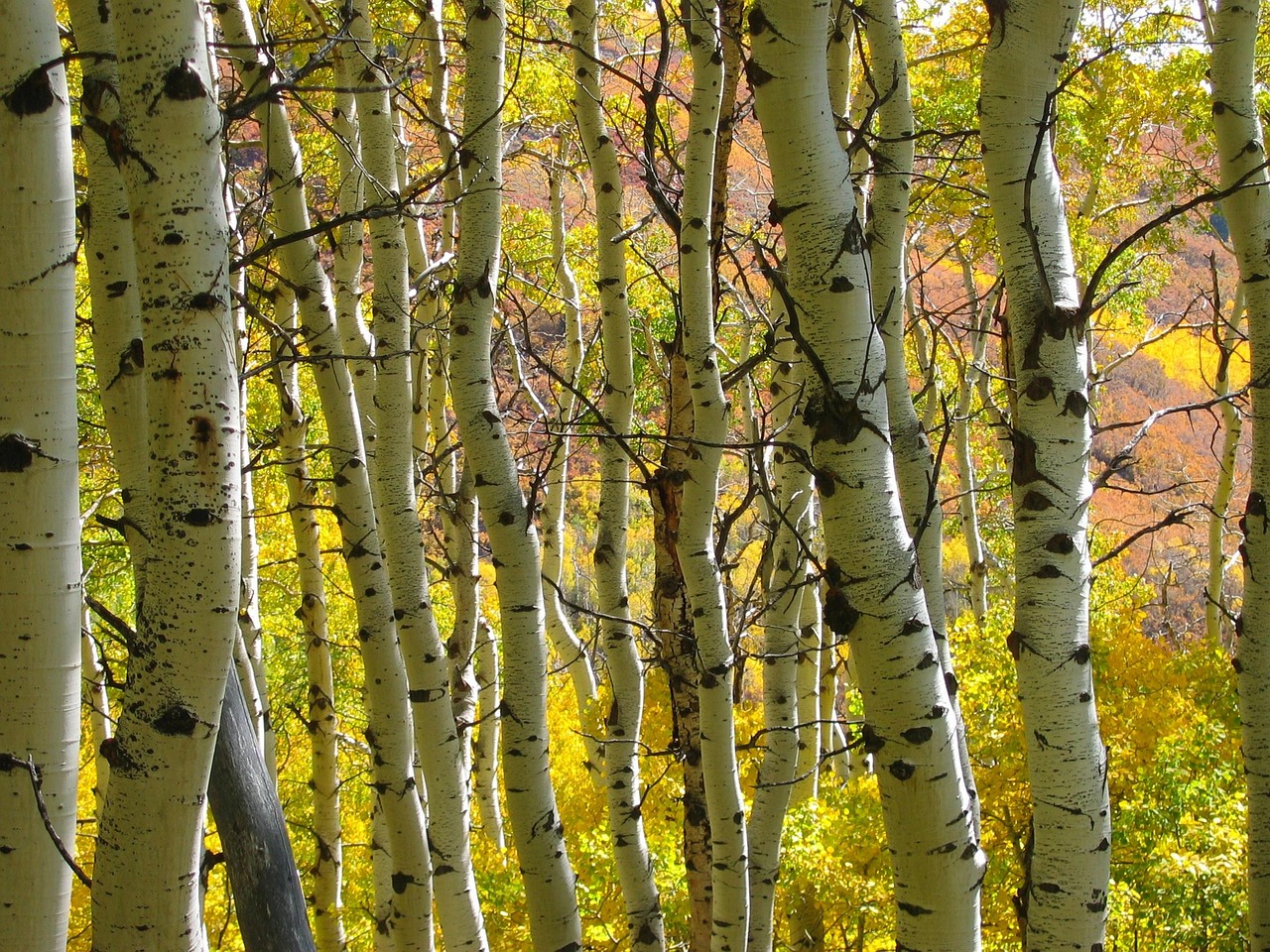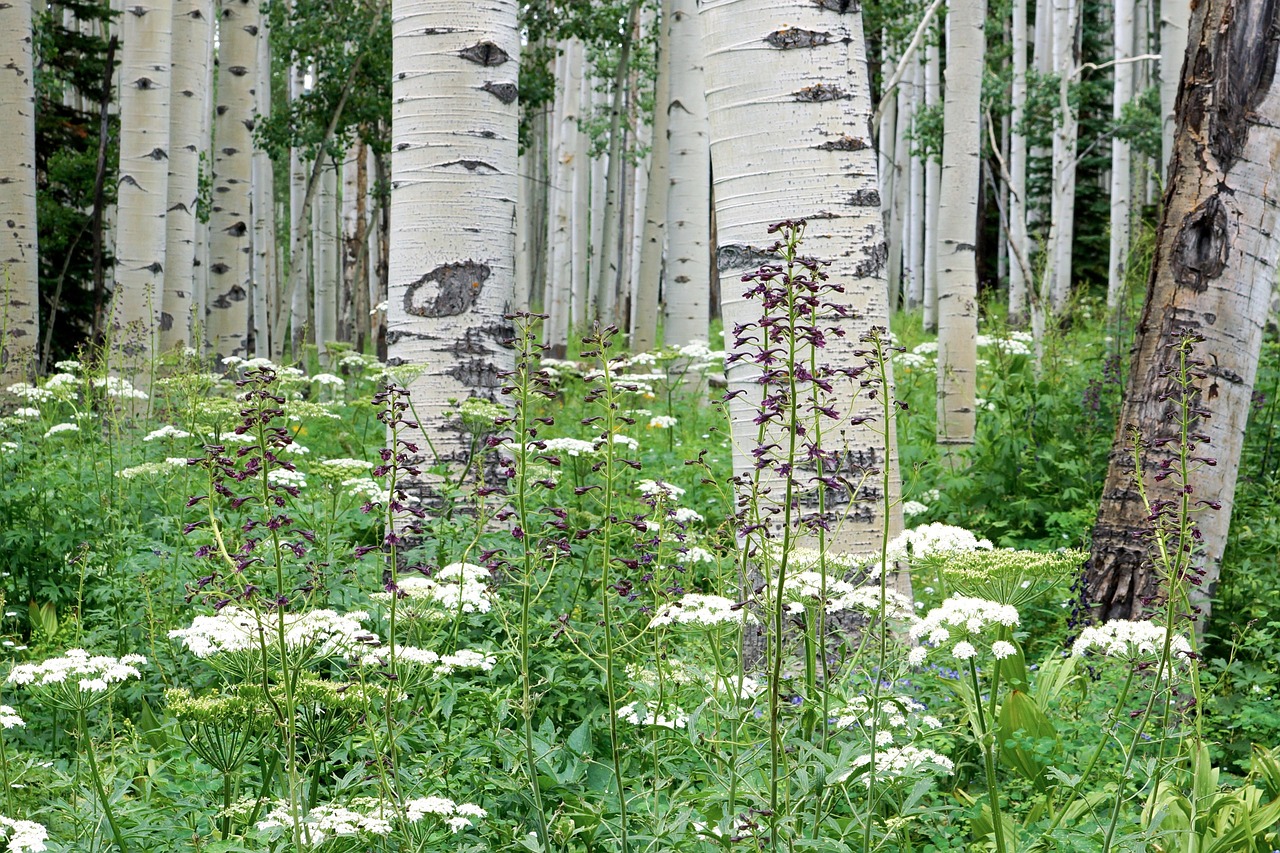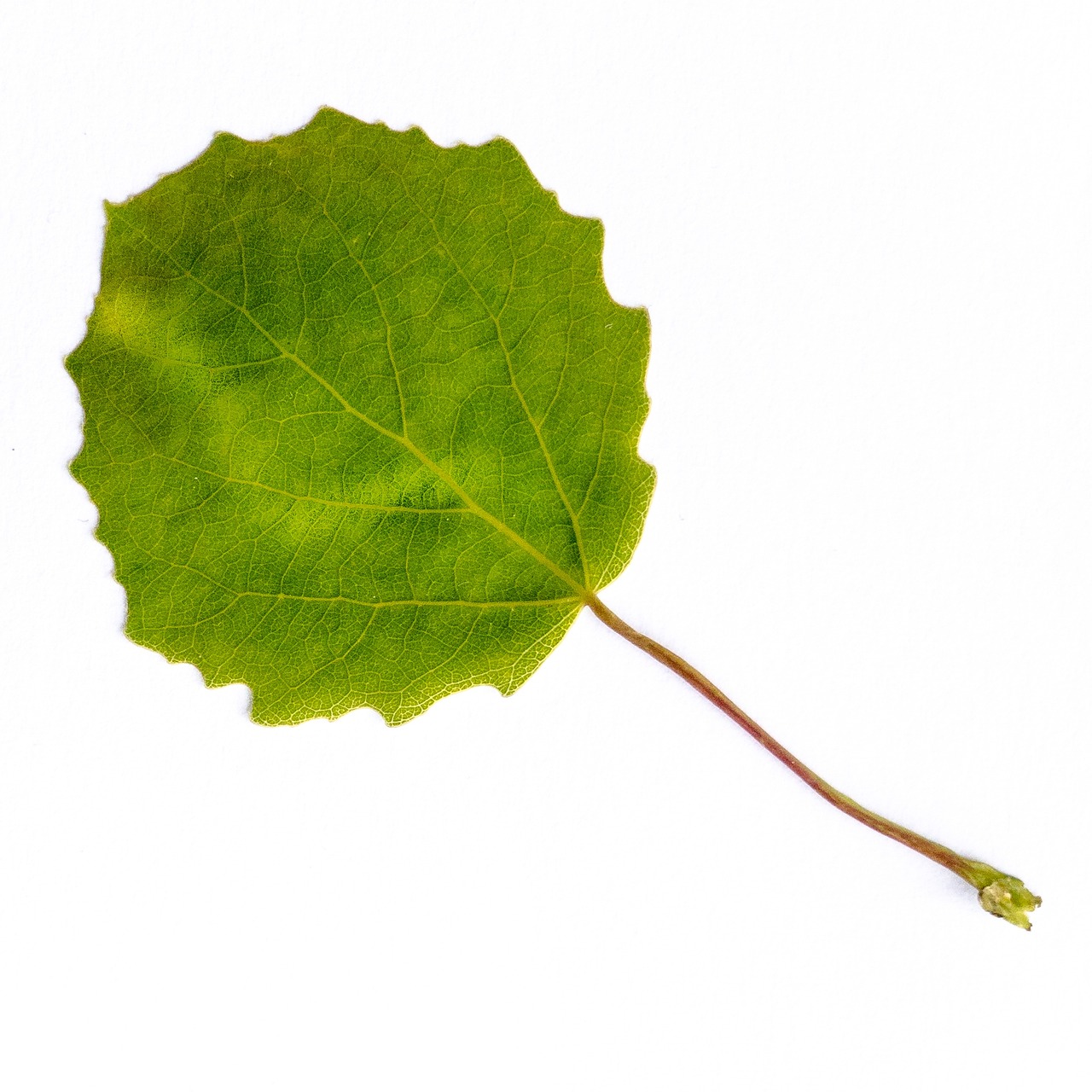Quaking Aspen, known scientifically as Populus tremuloides, is classified as a hardwood. This classification is due to its deciduous nature and wood density, which distinguishes it from softwoods like pine or fir.
Understanding Quaking Aspen

Quaking Aspen is a popular tree species found across North America. It is particularly noted for its distinctive white bark and fluttering leaves, which give it the name “quaking.” This tree is part of the Populus genus and belongs to the Salicaceae family. Aspens thrive in a variety of conditions, often growing in clusters and forming large groves. They are commonly found in mountainous regions, but can also adapt to various soil types and elevations.
One of the most fascinating aspects of Quaking Aspen is its ability to reproduce. The tree primarily propagates through root suckers, allowing it to form extensive colonies. This characteristic not only helps the species survive in harsh conditions but also creates beautiful landscapes with its shimmering leaves. The leaves, which turn vibrant shades of yellow in the fall, contribute significantly to the tree’s aesthetic appeal.
Physical Characteristics
The physical characteristics of Quaking Aspen contribute to its classification as hardwood. The tree typically grows between 40 to 50 feet tall, although some can reach heights of over 80 feet. The trunk can be about 1 to 2 feet in diameter. The bark is smooth and light-colored, often appearing almost white. As the tree matures, the bark develops darker scars and becomes more textured.
Leaf Structure
The leaves of Quaking Aspen are oval-shaped with serrated edges. They are usually about 2 to 5 inches long and have a vibrant green color during the growing season. The unique petiole structure allows the leaves to flutter in the wind, creating a mesmerizing effect. This leaf motion is not only visually appealing but also helps the tree reduce water loss during hot weather.
Wood Properties
In terms of wood properties, Quaking Aspen is known for its light weight and fine grain. The wood has a pale color that can range from white to light yellow. It is moderately durable and has good workability, making it suitable for various applications. Although it may not be as hard as some other hardwoods, such as oak or maple, it is still classified as hardwood due to its cellular structure and density.
| Characteristic | Description |
|---|---|
| Scientific Name | Populus tremuloides |
| Height | 40 to 50 feet (up to 80 feet) |
| Diameter | 1 to 2 feet |
| Wood Color | Pale white to light yellow |
| Wood Density | Moderate |
Quaking Aspen is often used in furniture making, cabinetry, and even as a source for paper. Its lightweight and workable nature make it a preferred choice for many artisans. Additionally, it provides essential habitats for wildlife, supporting various species in forest ecosystems.
Understanding whether Quaking Aspen is a hardwood involves looking at these physical and biological characteristics. Its classification as hardwood is not just about density, but also encompasses its growth habits and ecological significance.
Ecological Importance of Quaking Aspen
Quaking Aspen plays a vital role in its ecosystem, supporting various wildlife species and contributing to forest health. The tree’s unique growth habits and characteristics provide several ecological benefits. These benefits include enhancing biodiversity, improving soil quality, and serving as a habitat for numerous organisms.
Habitat and Biodiversity
The expansive groves formed by Quaking Aspen serve as critical habitats for a diverse range of wildlife. Many species rely on these trees for shelter, food, and nesting sites. Some of the animals that benefit from Quaking Aspen include:
- Birds: Numerous bird species, such as woodpeckers, chickadees, and warblers, use the trees for nesting and feeding. The insects that inhabit the aspen trees attract birds, providing them with a rich food source.
- Mammals: Animals like deer and elk often browse on the young shoots and leaves of Quaking Aspen. Beavers also utilize the trees for building dams and lodges.
- Insects: A variety of insects, from aphids to beetles, thrive in Quaking Aspen groves. These insects play a crucial role in the food web, supporting both birds and mammals.
Soil Enhancement
Quaking Aspen trees contribute to soil health in multiple ways. Their extensive root systems help stabilize the soil and prevent erosion. As these trees grow and shed leaves, they create a layer of organic matter that enriches the soil. This decomposition process enhances nutrient availability, benefiting surrounding plants. Furthermore, the presence of Quaking Aspen can improve water retention in the soil, which is crucial during dry seasons.
Propagation and Regeneration
Quaking Aspen has a remarkable ability to propagate and regenerate through root suckering. This process allows the tree to spread rapidly and form dense stands. When an aspen tree is damaged or cut down, it can produce new shoots from its root system, ensuring the continuity of the grove. This form of vegetative reproduction is essential for maintaining healthy populations in areas where conditions may be unfavorable.
Life Cycle and Growth
The life cycle of Quaking Aspen involves several stages:
- Seed Stage: The tree produces small seeds that can be dispersed by wind. However, seeds require specific conditions to germinate successfully.
- Sucker Stage: The more common form of reproduction occurs through suckers. Roots produce new shoots that emerge from the ground near the parent tree.
- Juvenile Stage: As suckers grow, they develop into young trees, establishing their own roots while remaining connected to the parent system.
- Mature Stage: Over time, these young trees mature into full-sized aspens capable of producing seeds.
Environmental Adaptations
Quaking Aspen trees are well adapted to various environmental conditions. They thrive in areas with full sunlight but can also tolerate partial shade. Their ability to grow in different soil types makes them versatile in their habitat choices. However, they prefer well-drained soils with ample moisture, which is often found in riparian zones or along mountain slopes.
The tree’s bark provides some protection against pests and diseases. As the outer layer thickens and matures, it helps deter insects and pathogens. Additionally, their rapid growth rate allows them to outcompete slower-growing species for resources.
Cultural Significance
Beyond their ecological importance, Quaking Aspens hold cultural significance for various communities. Many Indigenous peoples view these trees as sacred and integral to their traditions. The wood is used for crafting tools, making art, and in ceremonial practices. The stunning fall colors of Quaking Aspen also draw tourists and nature enthusiasts, contributing to local economies.

In summary, the ecological benefits of Quaking Aspen extend far beyond its immediate environment. From providing habitat to enriching soils, these trees are crucial components of healthy ecosystems. Their cultural relevance further emphasizes their importance in both natural and human contexts.
Uses of Quaking Aspen in Various Industries

Quaking Aspen is valued not only for its ecological and cultural significance but also for its diverse applications across various industries. Its lightweight and workable wood, along with its aesthetic appeal, makes it a preferred choice in several fields, including furniture making, construction, and even arts and crafts.
Wood Products
The wood of Quaking Aspen is known for its fine grain and pale color. This makes it suitable for various wood products. Some common uses include:
- Furniture: Aspen wood is often used in creating tables, chairs, and cabinets. Its light color and smooth texture make it an attractive choice for modern and rustic designs.
- Cabinetry: Many kitchen cabinets and built-in storage solutions utilize Quaking Aspen due to its durability and ease of finishing.
- Musical Instruments: The wood is sometimes used in the construction of musical instruments, particularly for parts requiring lightweight materials.
- Plywood: Aspen is frequently used in making plywood, where its strength-to-weight ratio is beneficial.
Paper Production
Quaking Aspen is also utilized in the production of paper. Its fibers are suitable for creating high-quality paper products. The softwood and hardwood blend in aspen pulp provides a balance of strength and smoothness, making it ideal for various types of paper, including:
- Printing Paper: Used in the production of magazines and brochures due to its excellent printability.
- Writing Paper: The smooth finish of aspen paper is perfect for note-taking and correspondence.
- Packaging: Aspen pulp can be used to create biodegradable packaging materials, supporting environmentally friendly practices.
Environmental Benefits
The presence of Quaking Aspen in forests has numerous environmental benefits that go beyond supporting wildlife. These trees play a critical role in maintaining healthy ecosystems.
Carbon Sequestration
Quaking Aspen trees are effective at carbon sequestration. They absorb carbon dioxide from the atmosphere during photosynthesis and store it in their biomass. This process helps mitigate climate change by reducing greenhouse gases. The rapid growth rate of aspen contributes to their ability to sequester carbon effectively, making them important players in global efforts to combat climate change.
Erosion Control
The extensive root systems of Quaking Aspen help prevent soil erosion. By stabilizing the soil, these trees reduce the risk of landslides and maintain the integrity of the landscape. Their ability to grow in groups further reinforces this effect, as the collective root structures create a strong barrier against erosion.
Water Management
Quaking Aspen trees contribute to effective water management in their ecosystems. Their leaf canopy helps regulate water flow by intercepting rainfall and reducing runoff. In addition, the organic matter they contribute to the soil improves water retention, which is crucial during dry periods. This creates a healthier environment for both plants and animals.
Cultivation and Care
Cultivating Quaking Aspen requires specific considerations to ensure healthy growth and sustainability. As a species that thrives in clusters, understanding their growth conditions is essential for successful planting.
Optimal Growing Conditions
Quaking Aspen prefers:
- Sunlight: They thrive in full sun but can tolerate partial shade.
- Soil Types: Well-drained soils rich in organic matter are ideal for their growth.
- Moisture: While they can tolerate some drought, consistent moisture supports optimal growth.
Pest and Disease Management
Like any tree species, Quaking Aspen can be susceptible to pests and diseases. Common issues include:
- Aspen Bark Beetles: These pests can damage the bark and weaken the tree.
- Leaf Spot Diseases: Various fungal infections can affect the leaves, leading to reduced vitality.
Regular monitoring and maintaining tree health through proper care can help mitigate these issues. Early detection is key to managing potential threats effectively.
Challenges in Quaking Aspen Management
Managing Quaking Aspen populations can present several challenges. While these trees are resilient, they face pressures from environmental changes, human activities, and natural disturbances. Understanding these challenges is essential for effective conservation and management.
Climate Change Impact
Climate change poses significant threats to Quaking Aspen ecosystems. Rising temperatures and changing precipitation patterns can affect the growth and health of these trees. Some concerns include:
- Increased Drought: Extended dry periods can stress aspen trees, making them more vulnerable to pests and diseases.
- Altered Growth Patterns: Changes in seasonal weather may impact the timing of leaf emergence and growth, which could disrupt the tree’s life cycle.
- Range Shifts: Warmer temperatures may push Quaking Aspen into higher elevations or more northern latitudes, affecting their distribution.
Human Influence
Human activities have also significantly impacted Quaking Aspen forests. Urban development, logging, and agriculture can lead to habitat fragmentation and loss. These actions disrupt the natural growth patterns of aspen groves and can diminish biodiversity.
Natural Disturbances
Natural disturbances, such as wildfires, insect outbreaks, and diseases, can alter aspen populations. While some disturbances can promote regeneration, others may lead to substantial tree loss. For example:
- Wildfires: While aspen trees are somewhat fire-resistant, intense wildfires can devastate entire groves, especially if they occur during dry seasons.
- Insect Outbreaks: Pests like the aspen bark beetle can quickly decimate trees, leading to weakened stands that are less capable of recovery.
Conservation Strategies

To ensure the long-term survival of Quaking Aspen, various conservation strategies can be implemented. These strategies aim to balance human needs with ecological health.
Habitat Restoration
Restoring damaged habitats is essential for maintaining healthy Quaking Aspen populations. This may involve:
- Replanting: Planting aspen in areas where they have been lost due to logging or development helps restore their presence.
- Controlling Invasive Species: Managing non-native species that compete with aspen for resources supports their regrowth.
Sustainable Forestry Practices
Sustainable forestry practices help minimize the impact of logging on aspen ecosystems. This includes selective logging, which removes only certain trees while preserving the overall forest structure. Additionally, implementing buffer zones around aspen groves can help protect them from surrounding activities.
Final Thoughts
Quaking Aspen is a remarkable tree species that plays a vital role in ecosystems across North America. Its classification as a hardwood reflects its unique characteristics and ecological importance. From supporting wildlife to contributing to carbon sequestration, Quaking Aspen is integral to maintaining healthy forests.
The challenges posed by climate change, human activities, and natural disturbances highlight the need for effective management strategies. By implementing conservation efforts and sustainable practices, we can protect these iconic trees for future generations. As we continue to learn about the value of Quaking Aspen, it becomes increasingly clear that preserving this species is crucial for biodiversity and ecological balance.
In summary, Quaking Aspen’s significance extends beyond its classification as a hardwood. Its ecological, cultural, and practical values underscore the necessity of understanding and preserving this unique tree species. By fostering awareness and encouraging sustainable practices, we can ensure that Quaking Aspen continues to thrive in our landscapes.
